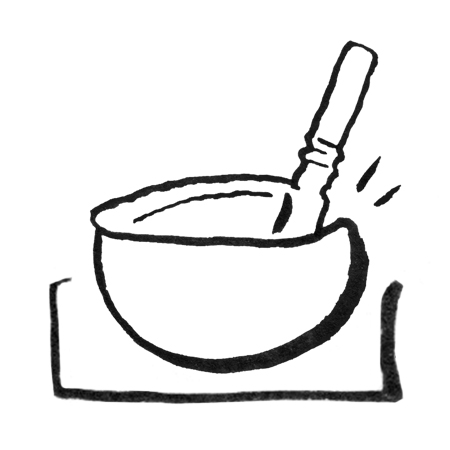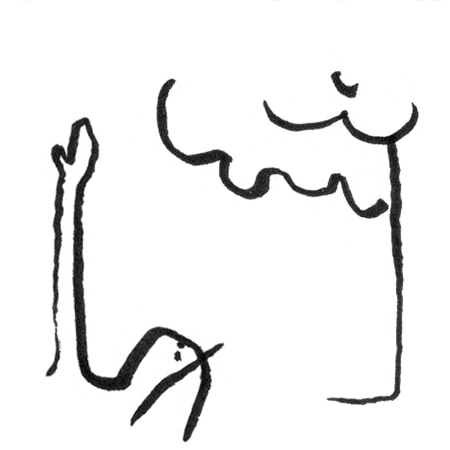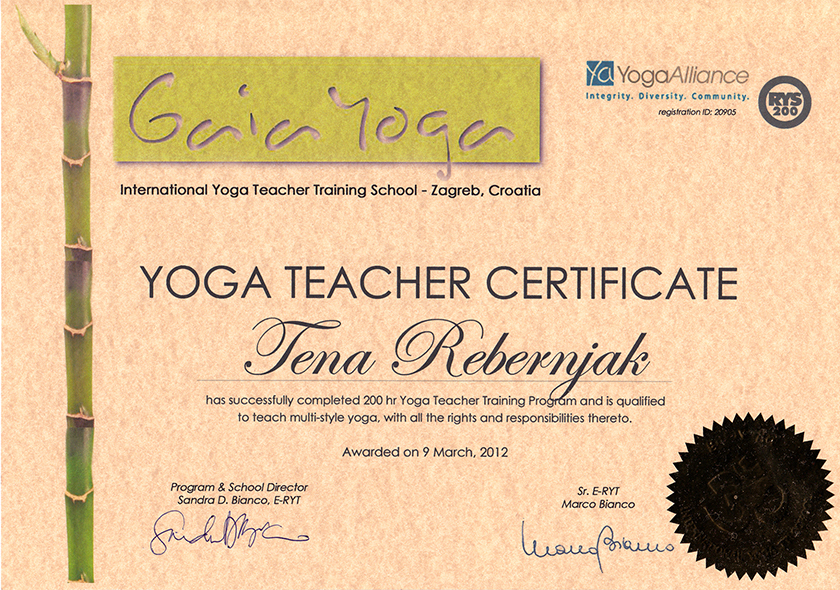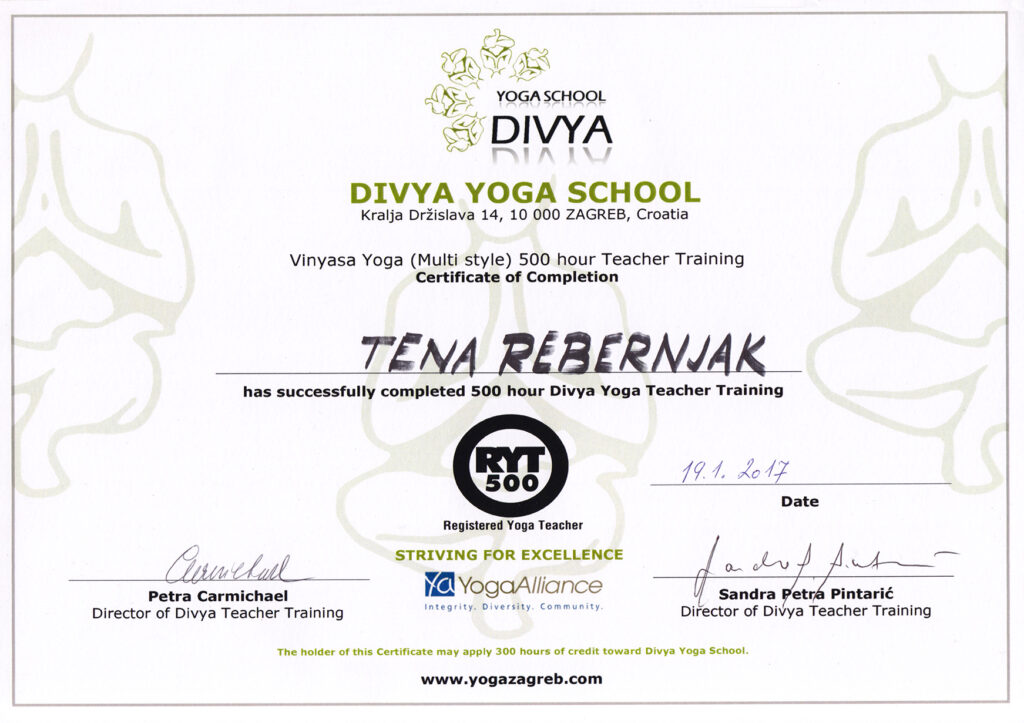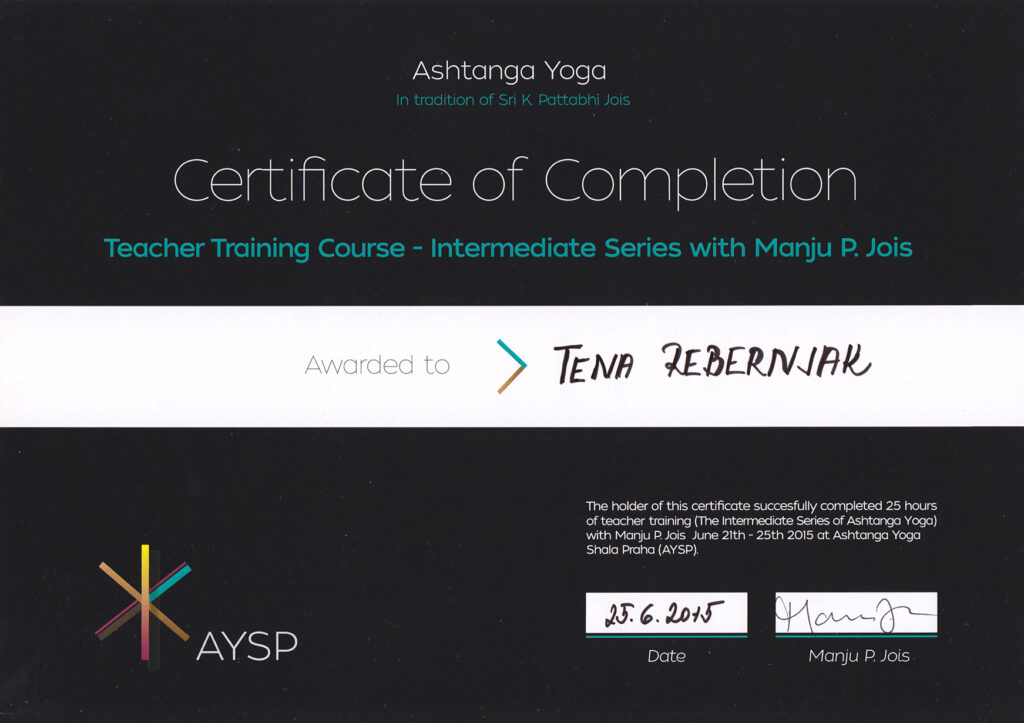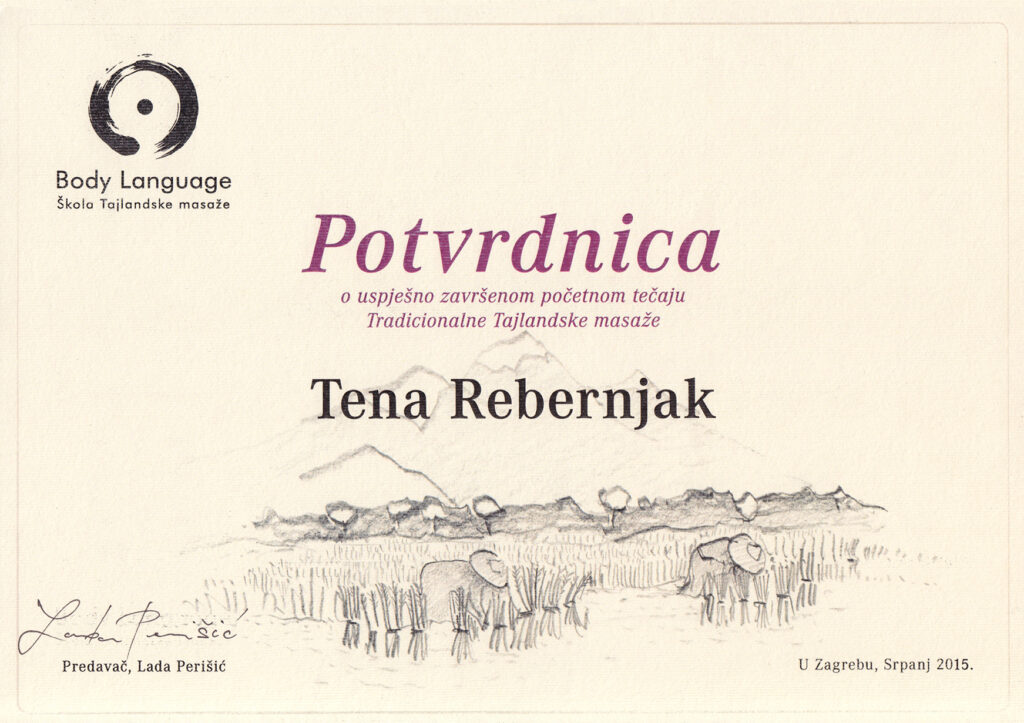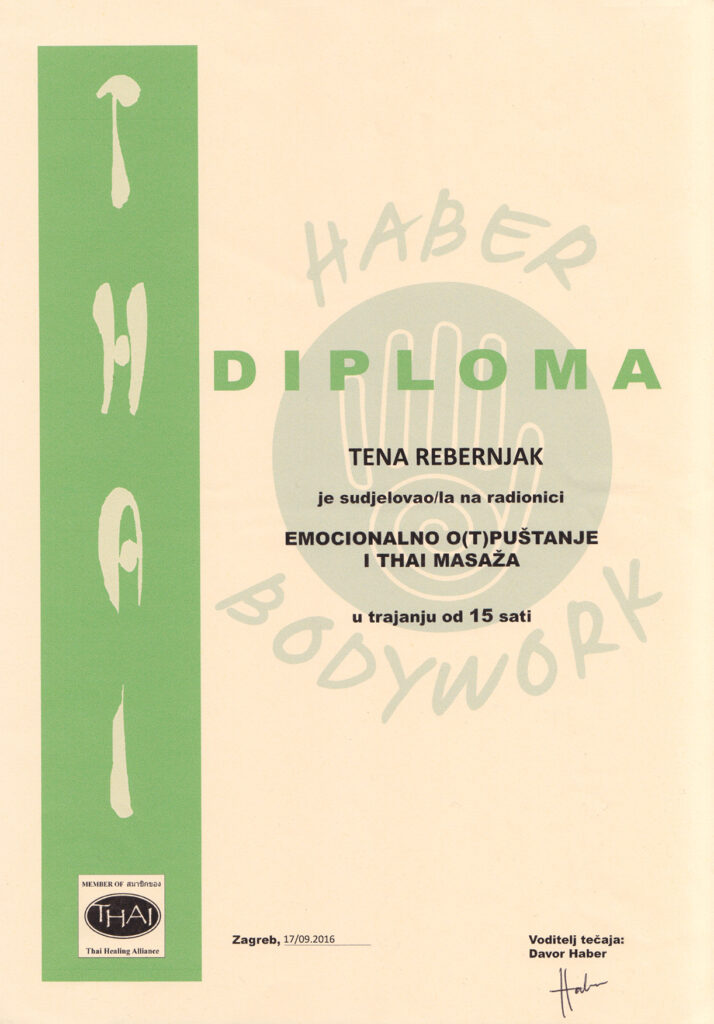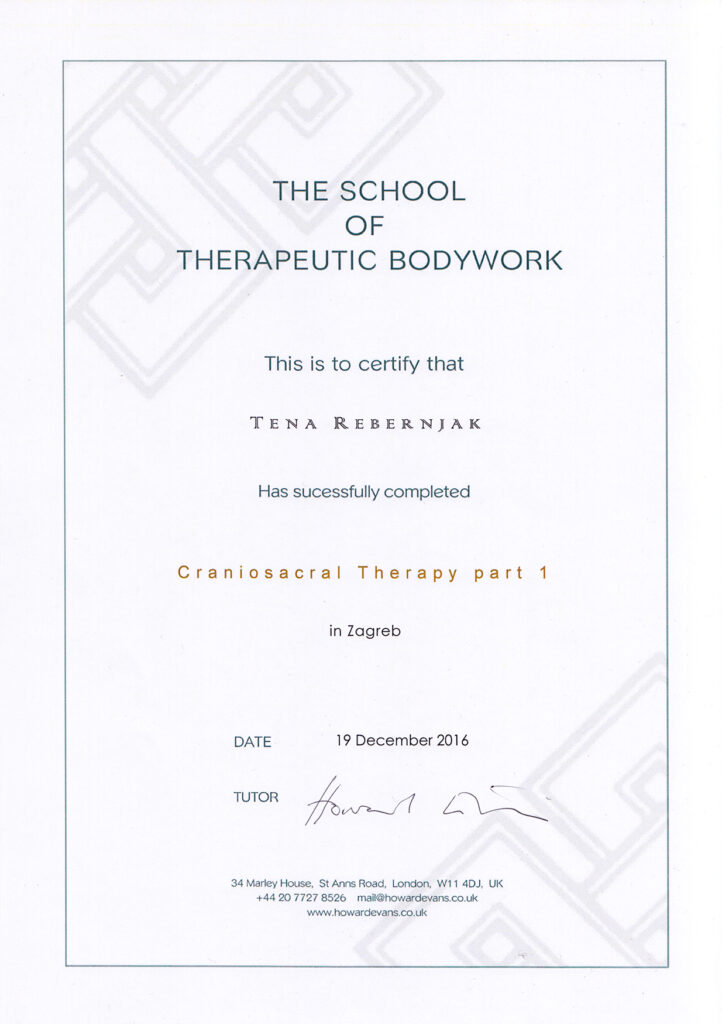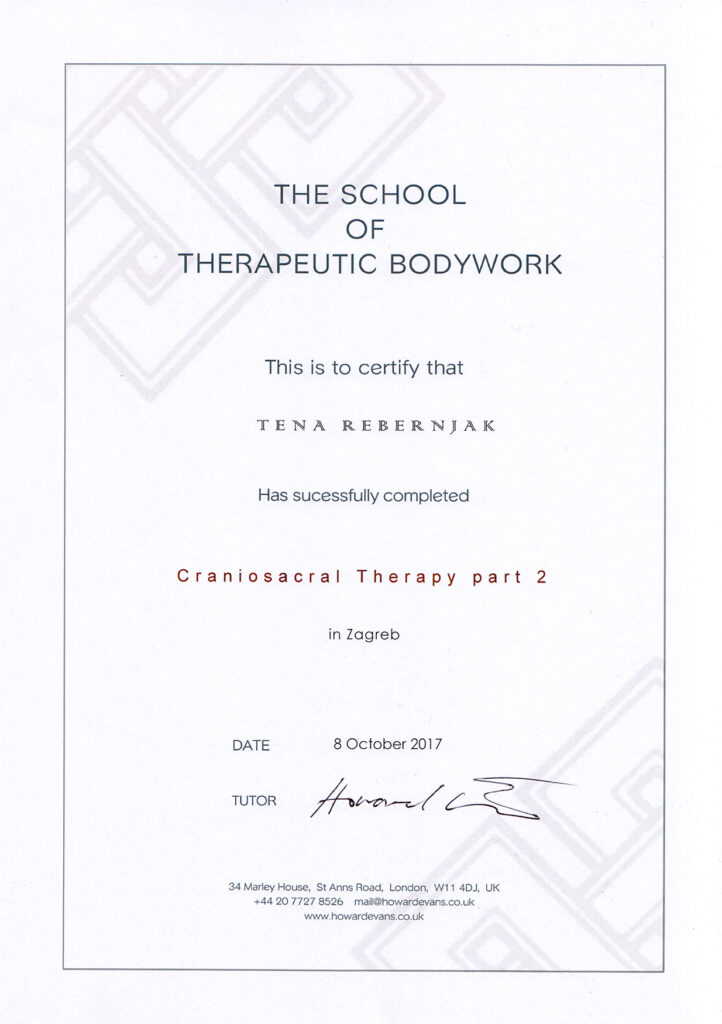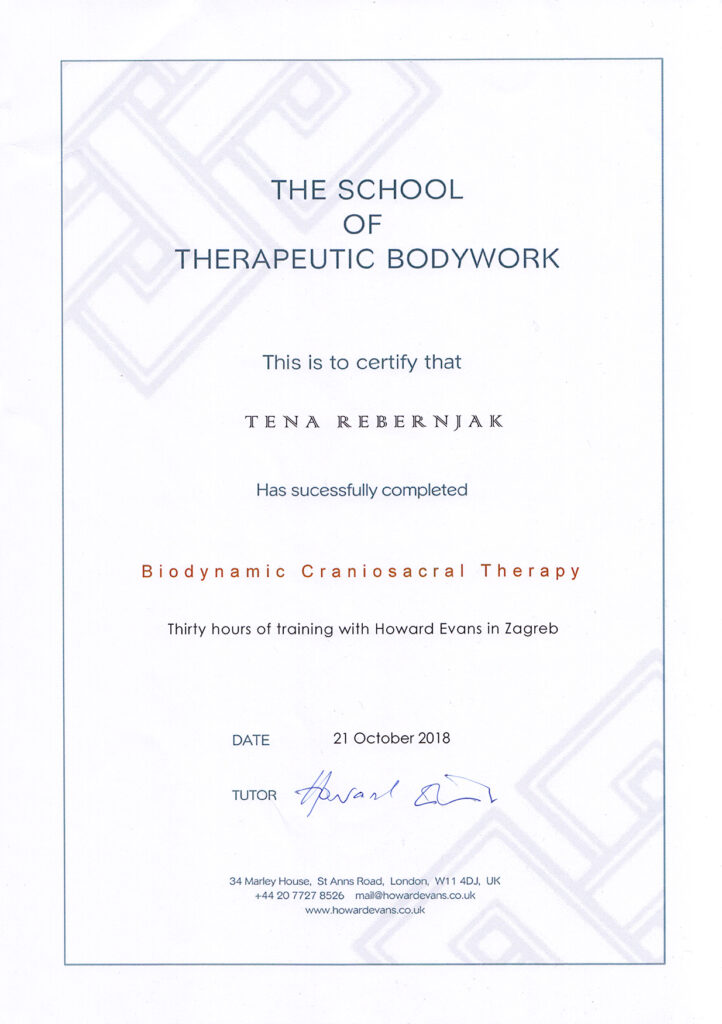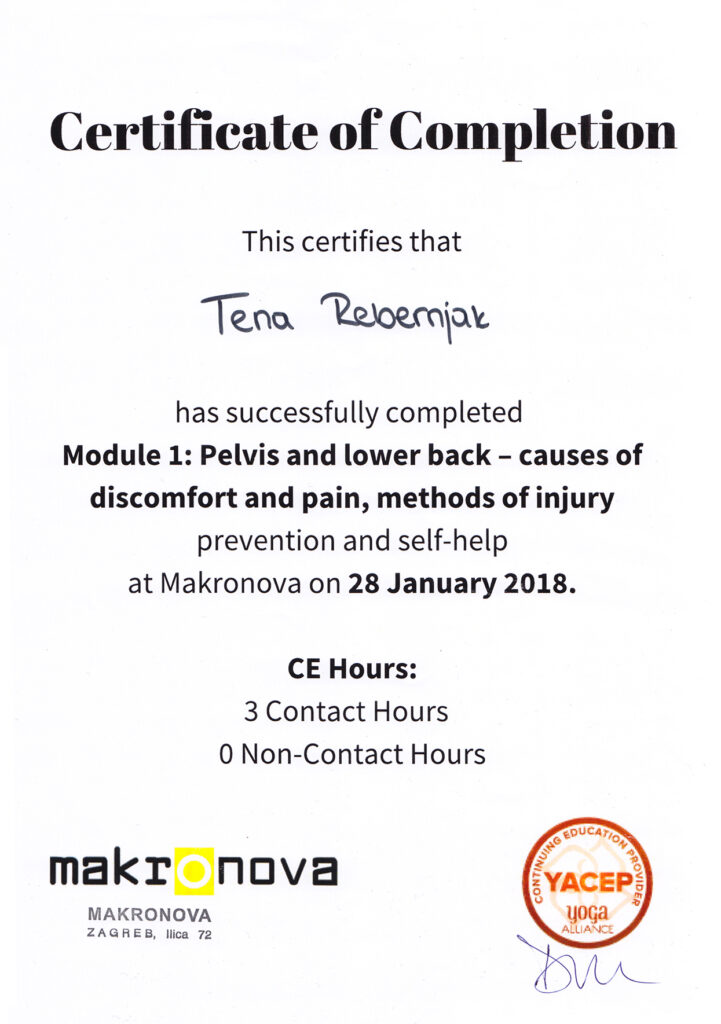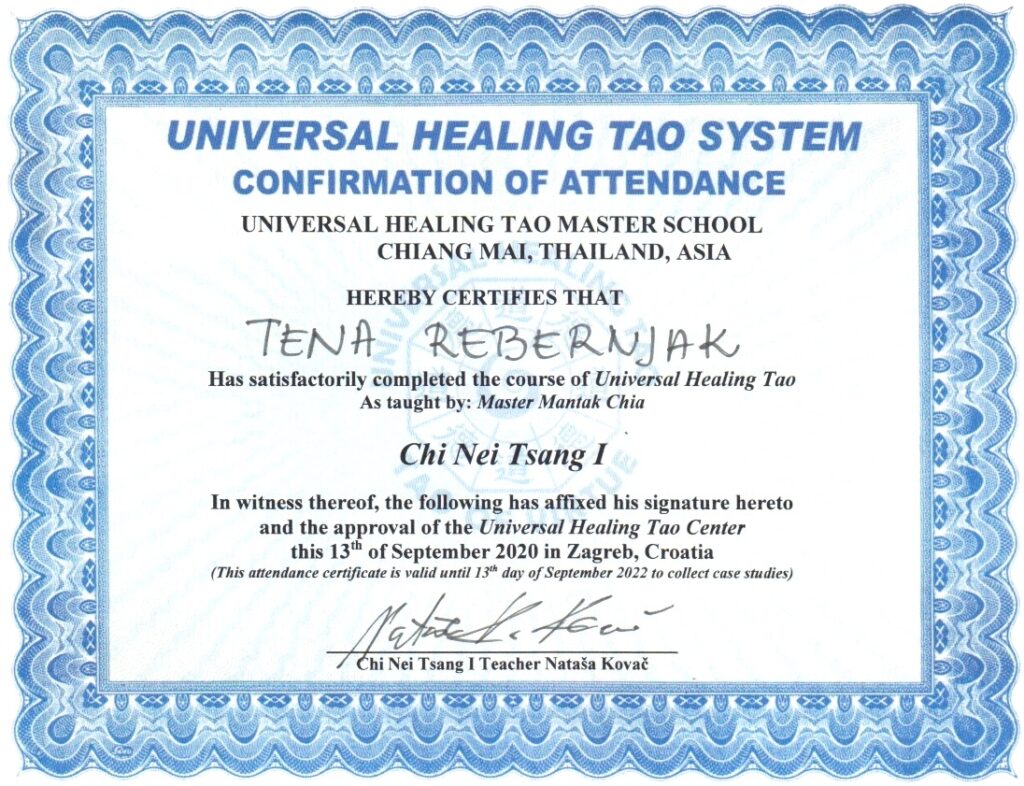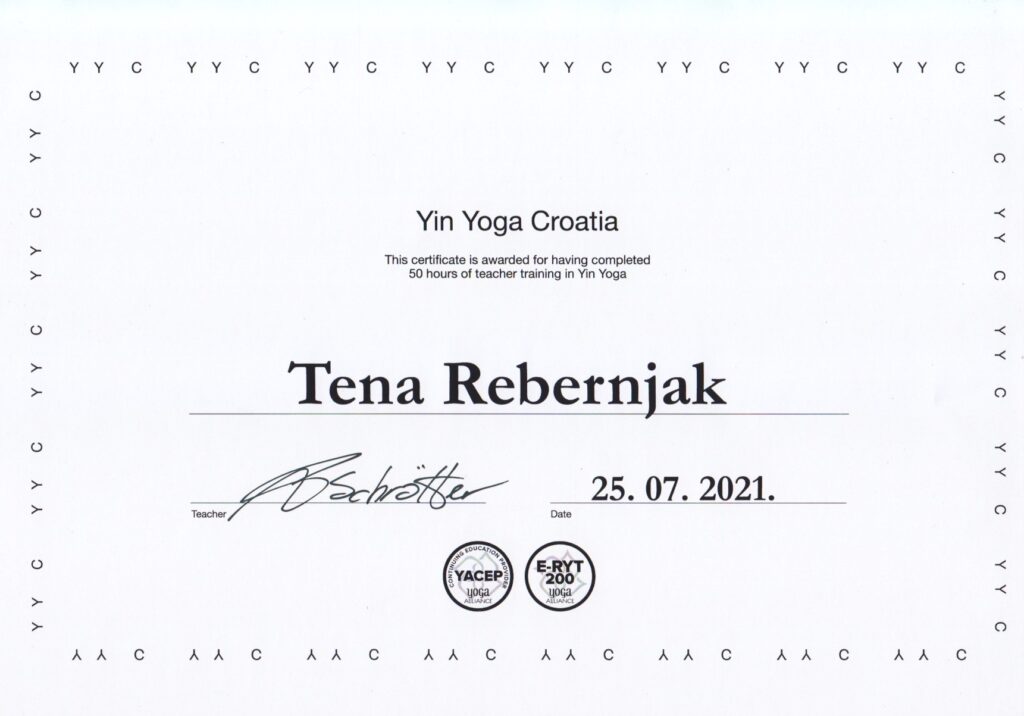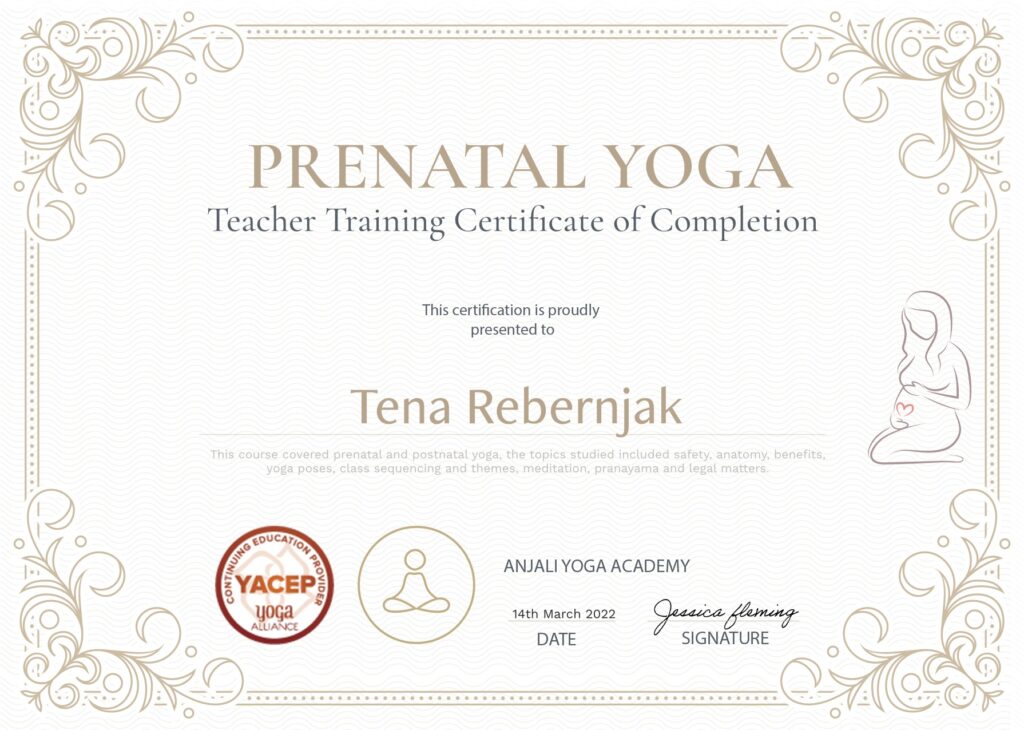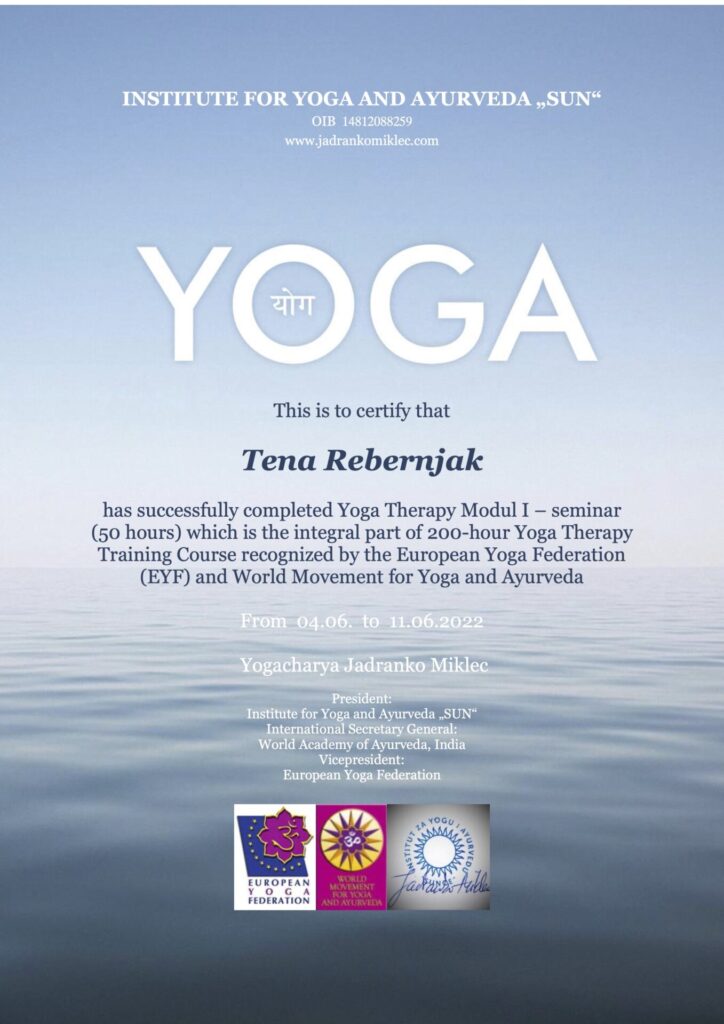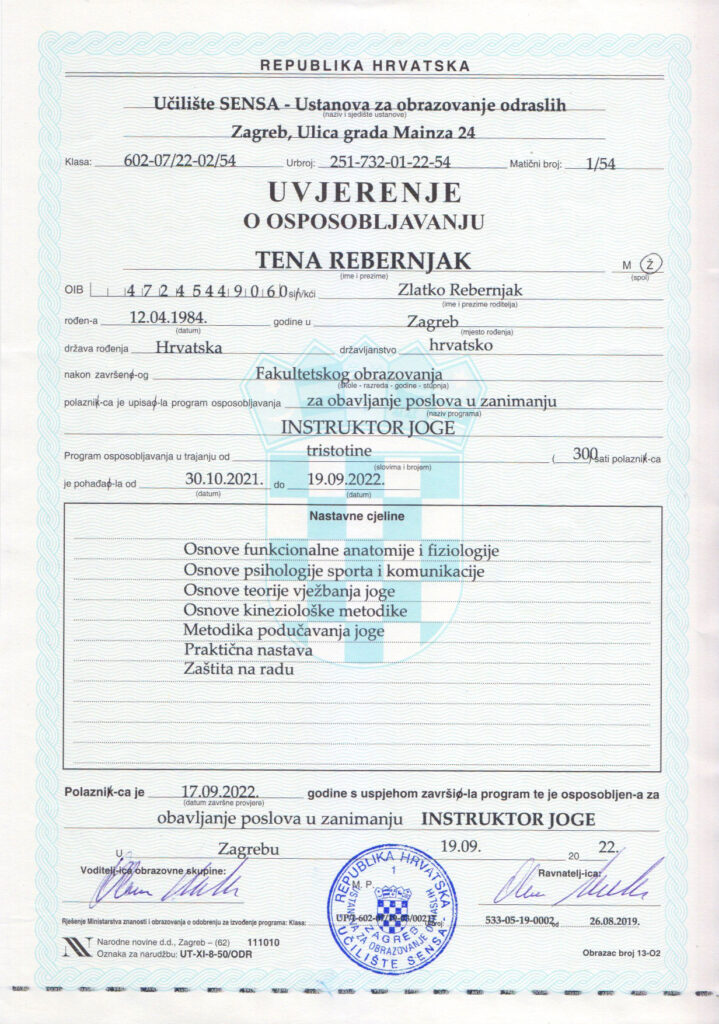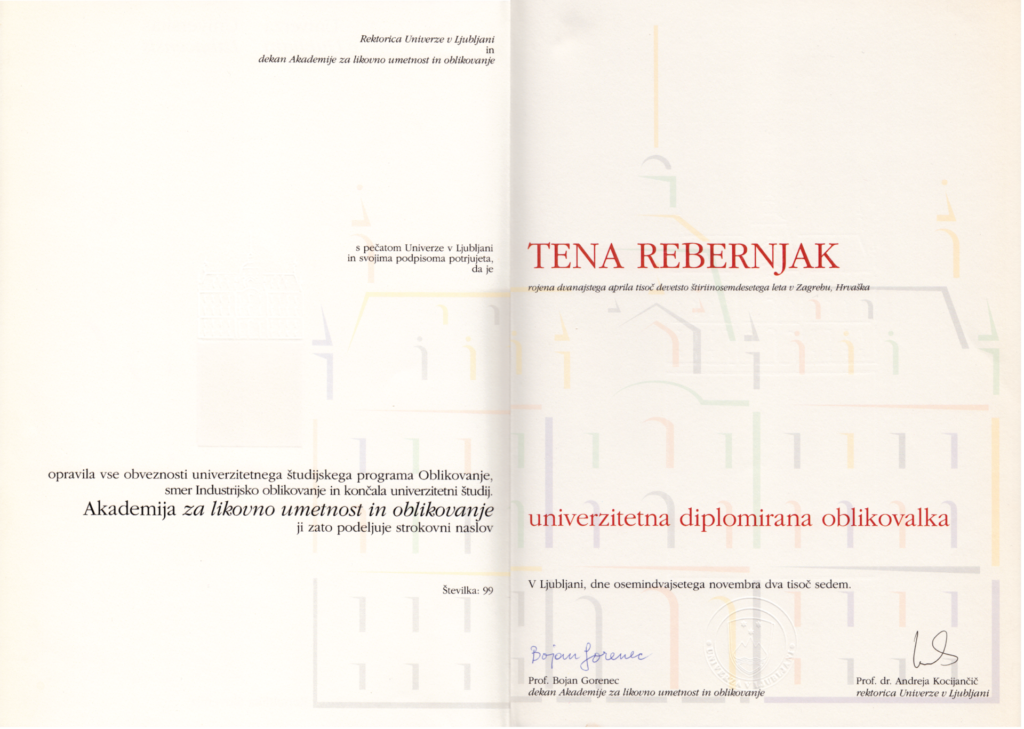I share with you the joy and passion for the health of body
About me
Q: What does yoga mean to you?
A: For me, yoga is inseparable from life, I practice it, study, educate myself and teach. With many years of experiences in working with people I try to make yoga as accessible as possible.
Just to explain, yoga can mean many things. For example, studying Indology and sacred Hindu scriptures, chanting mantras, following the guru, body and breath movement… My attitude towards the discipline that came to us from the East is that we should take what is the best for us and fit it into the lifestyle and culture that we live in.
I personally recognised that the “most visible” aspect of yoga is the most useful for me. Yogic methods in the form of exercises, targeted yogic techniques, work with the breath, methods of working with the mind (meditation), yogic nutrition and similar. These are numerous excellent tips and practical instructions that serve to maintain health, solve health problems, reduce stress and generally improve the quality of life. Good old motto “a healthy mind in a healthy body” (Mens sana in corpore sano). For me, there is no religious connotation, no dogma or doubt – yoga is for everyone, we can all have great merit from this practice.
Yoga is a set of intelligent and practical methods for maintaining health that are applicable to everybody regardless of race, gender and age.
The only characteristic required for the practice of yoga is personal willingness to invest effort and will, in other words the only obstacle is laziness. Our health is in our hands. Professional help, such as doctors, counselors and instructors help to give instructions and guidelines on how to treat and maintain health, but in the end everyone still needs to work and put in the effort.
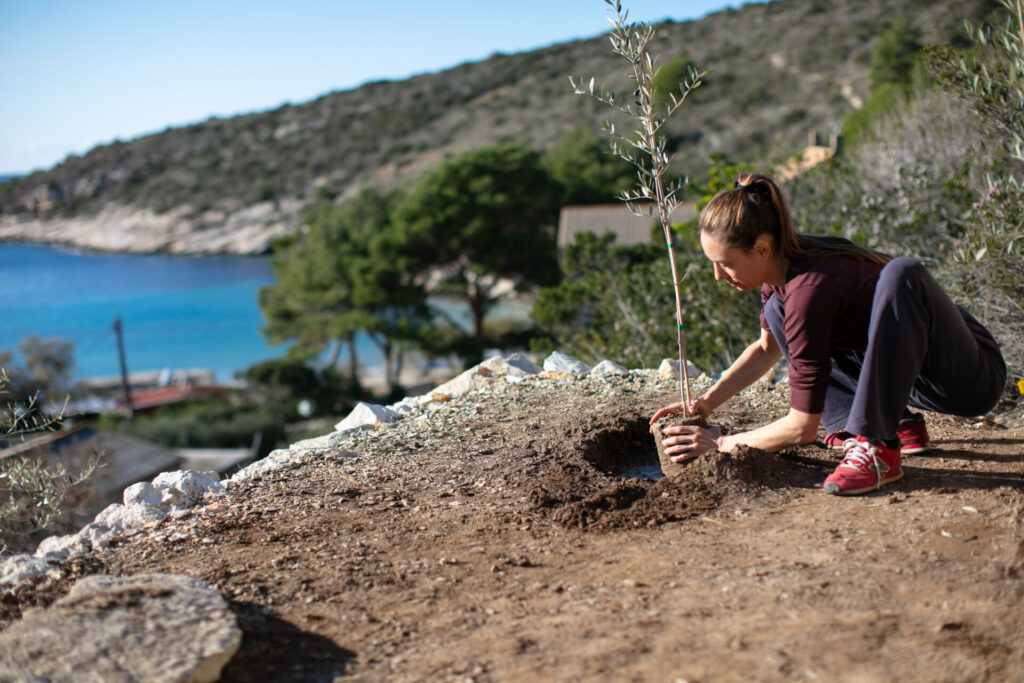
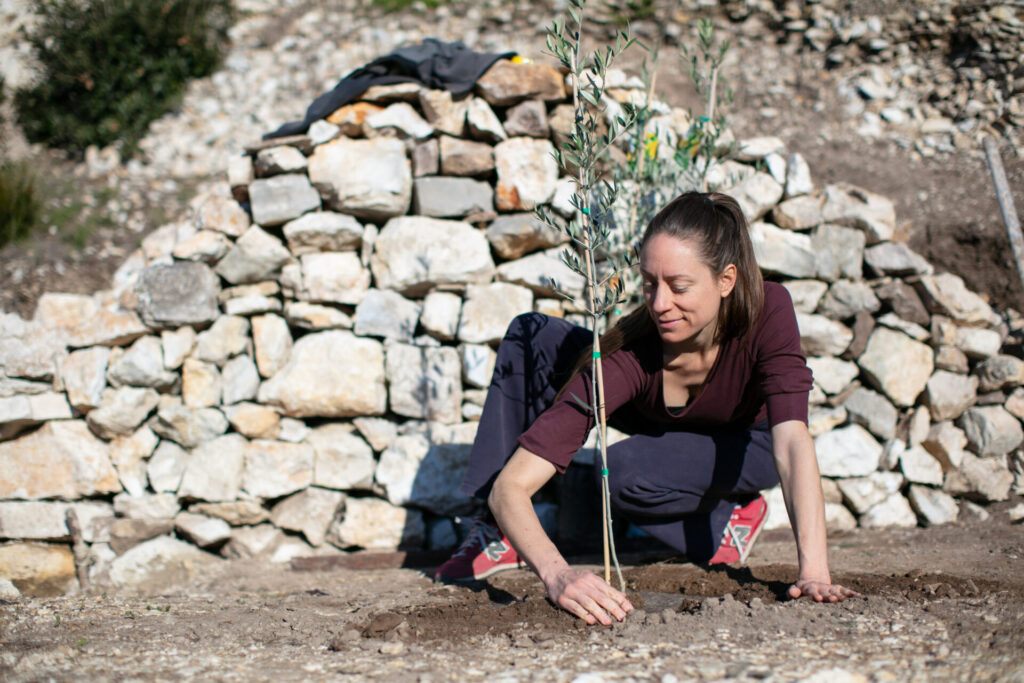
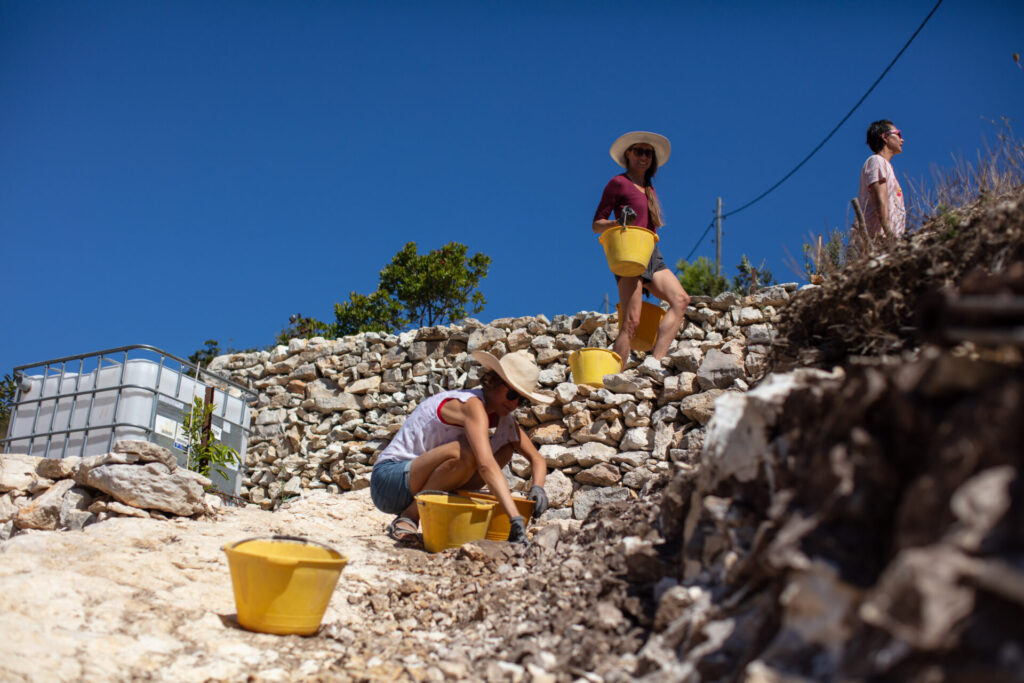
Photo: Stjepan Tafra
Q: What is the meaning of yoga practice?
A: As everything in our lives, the first question we need to answer is what intention do we act from.
We should honestly confess ourselves with what motivation we approach anything we do in our lives, especially yoga. The will and dedication that we need for regular physical and mental directing (so-called discipline) will be driven by the intention that we act from. There can be many reasons why we do yoga and what we want from the practice, so everyone has to see for themselves what intention is a driving force.
If we act from the intention that we want to achieve a result in yoga, such as to accomplish an asana “the way it should look”, we will injure ourselves (it’s the same in life, fixation on the result blinds us for the path). Yoga is not a practice of accumulating personal achievements and ego trips it is about giving and reducing the sense of self. Yoga is practiced non-violently. Violence towards oneself is forcing ourselves to go “deeper” at the moment when we feel that the body cannot do it just because we could do it yesterday or because someone next to us can. By following such thoughts, we are going against the meaning of yoga.
If we set the intention to do our best right now, respecting what comes up, we develop habits of the mind that are of great value in our overall approach to life. When we practice there is no yesterday and tomorrow, there is only respect for what is here now, and love to do the best we can.
Giving our best effort, with love to what we are doing moment by moment is the meaning of life.
Therefore, the meaning of yoga practice is the answer to the question with which we start our practice. With this answer (our intention), while we do yoga, we will express our relationship to what we do and our relationship to ourselves in general. Yoga clearly shows us the relationship that we have with ourselves. Self-criticism, self-doubt, fear of what we feel, nervousness, boredom, lack of self-esteem and similar emotions will immediately surface, so we can see what we feel and what drives us to practice. Yoga philosophy promotes compassion as a tool to deal with the inner attitudes that we believe in but are toxic to us and bring us pain.
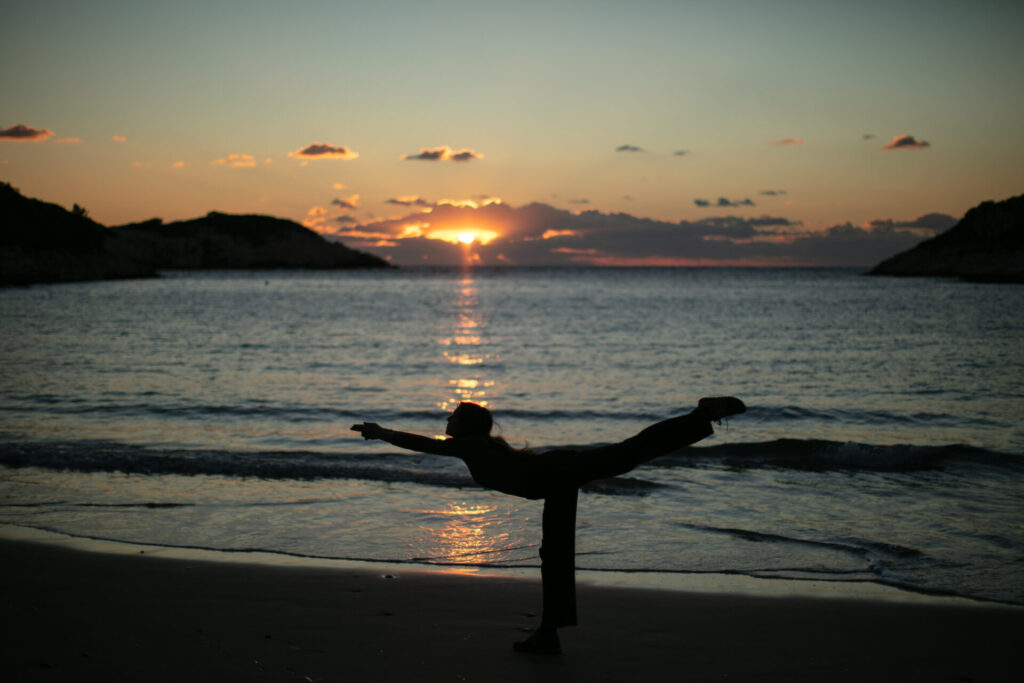
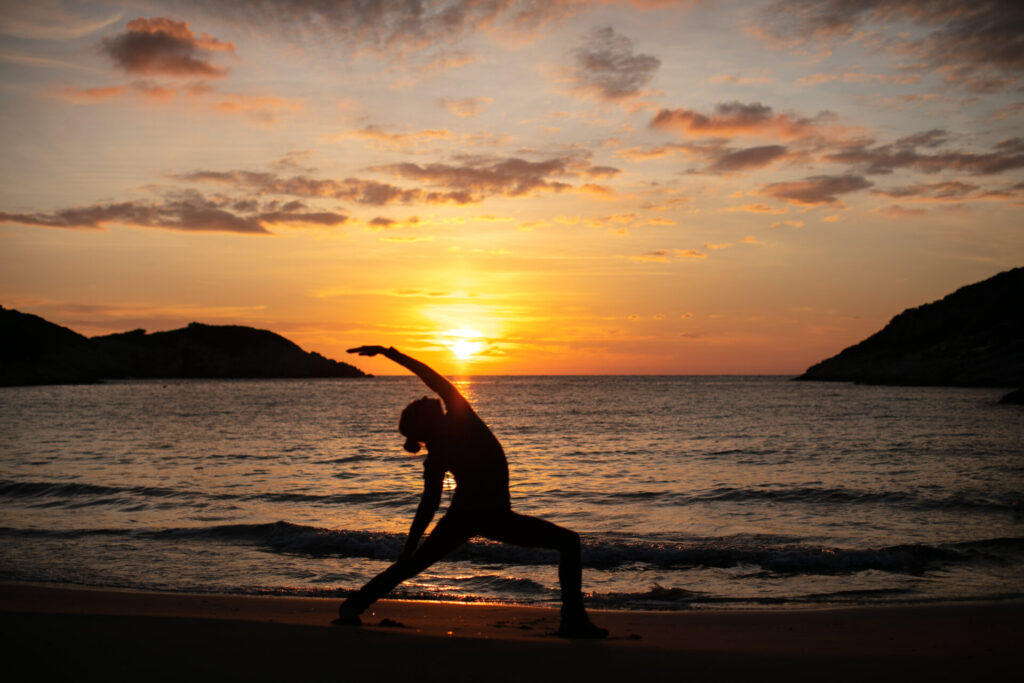
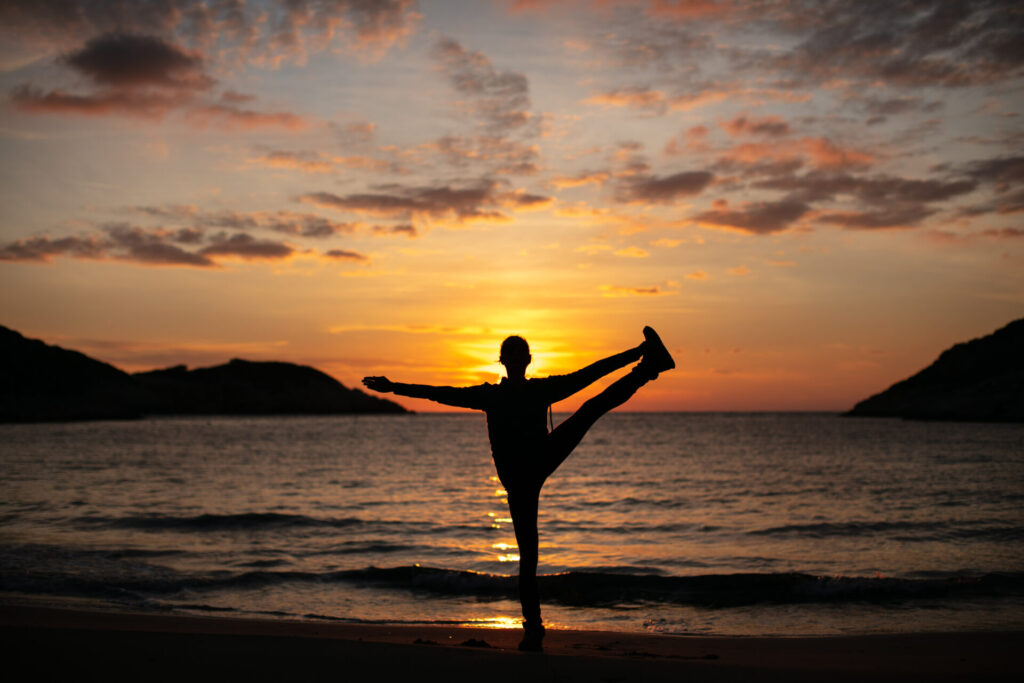
Photo: Stjepan Tafra
Q: How does yoga educate us and what does it enable us to do?
A: We consider yoga a holistic discipline because it deals with the unification of body and mind. The word yoga itself means “to unite” and it can be interpreted literally: we unite our full conscious attention with the physical experience that is taking place in the body at this moment.
Through yoga, we learn to accept, overcome and let go of habits that hold us back. We learn to distinguish the feeling of bodily sensations from the commentary that we have on it, which are usually very closely related. The problem with this short circuit is that we automatically react to thoughts that were triggered by bodily sensations that again trigger the same thoughts and we spin in a “blind circle” (samsara).
Our goal in yoga is to provide more space to make conscious reactions and an opportunity for new options and solutions. For example, when we are standing in a position that is challenging for us and thoughts come to us that we can no longer bear it, but we still stay, find a way to breathe, accept it with our body, little by little we weaken the thoughts that we “can’t bare it” and start experiencing the same experience from another perspective. We know that the most effective change occurs when we work with body and mind together.
Our body is a treasury of habits, memories and subconscious intentions. The body experiences the world around it, and the mind interprets that experience.
Another useful and practical reprogramming that occurs through regular (correct) yoga practice is the separation of stress from the strength in the body. Certain parts of the body when tense (active) will develop strength, while others when in spasm hold stress in the body. Being able to separate these two (which are very often activated together) is the difference between “holding the situation” or “falling into it”.
For example, if we do something physically difficult such as a challenging yoga position and we react to it with a frown and a short breath, the whole experience can create new stress, but the situation changes already when we relax our facial muscles and deepen our breathing. Through the practice of yoga, we get the opportunity to create an experience with our body and respond to any situation consciously, patiently and compassionately.
The path of yoga is slow, and changes us gradually. By understanding ourselves, we develop patience for others, and by building relationship with ourselves, we change our relationship with the environment.
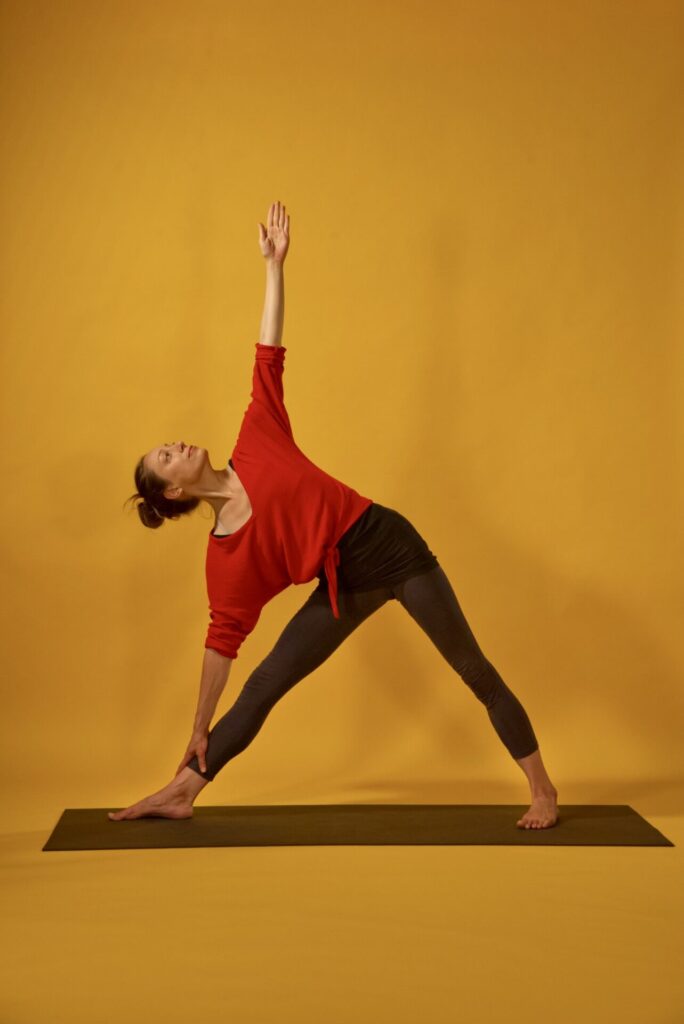
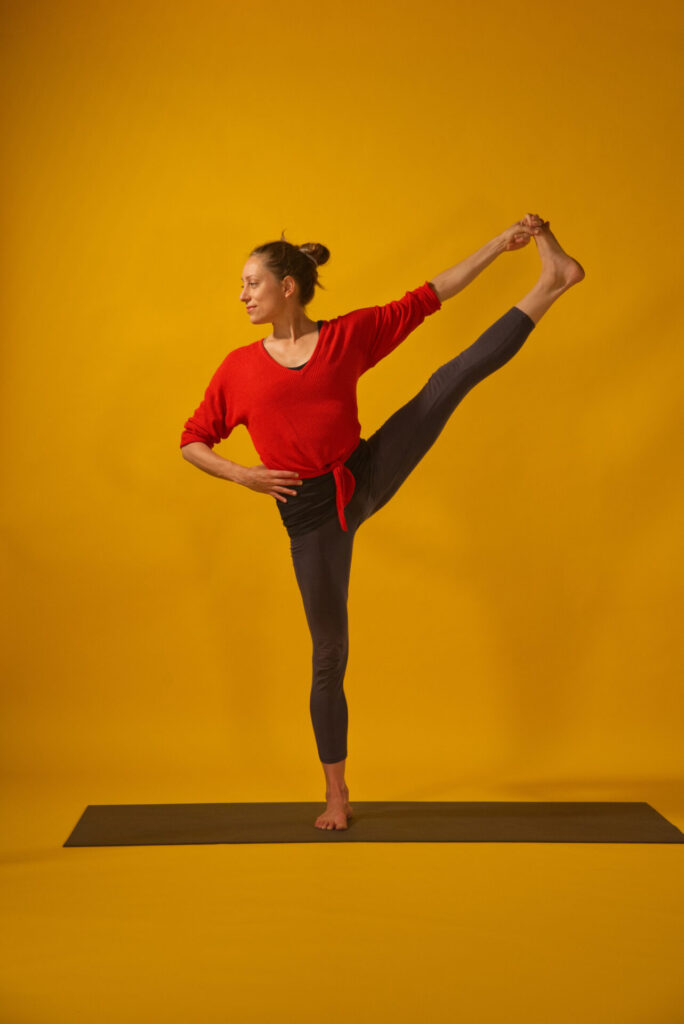
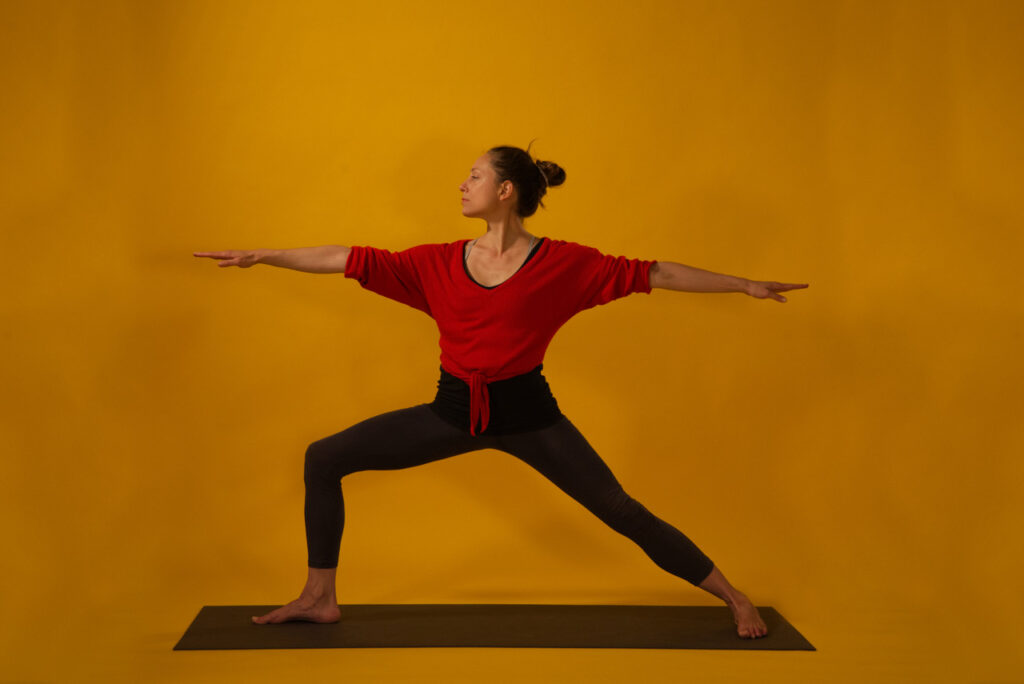
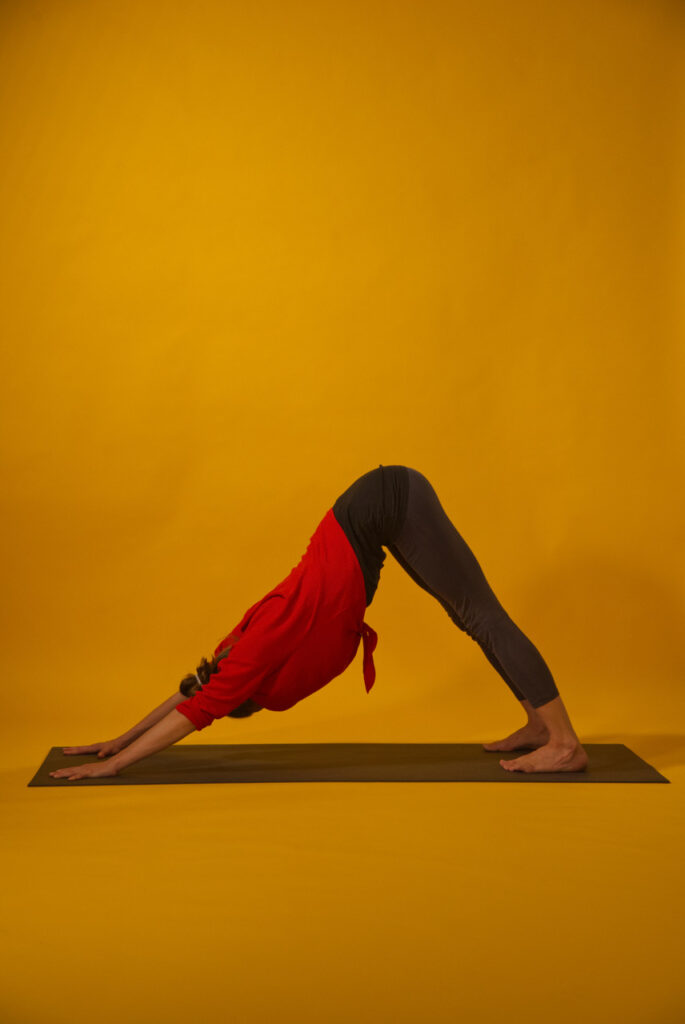
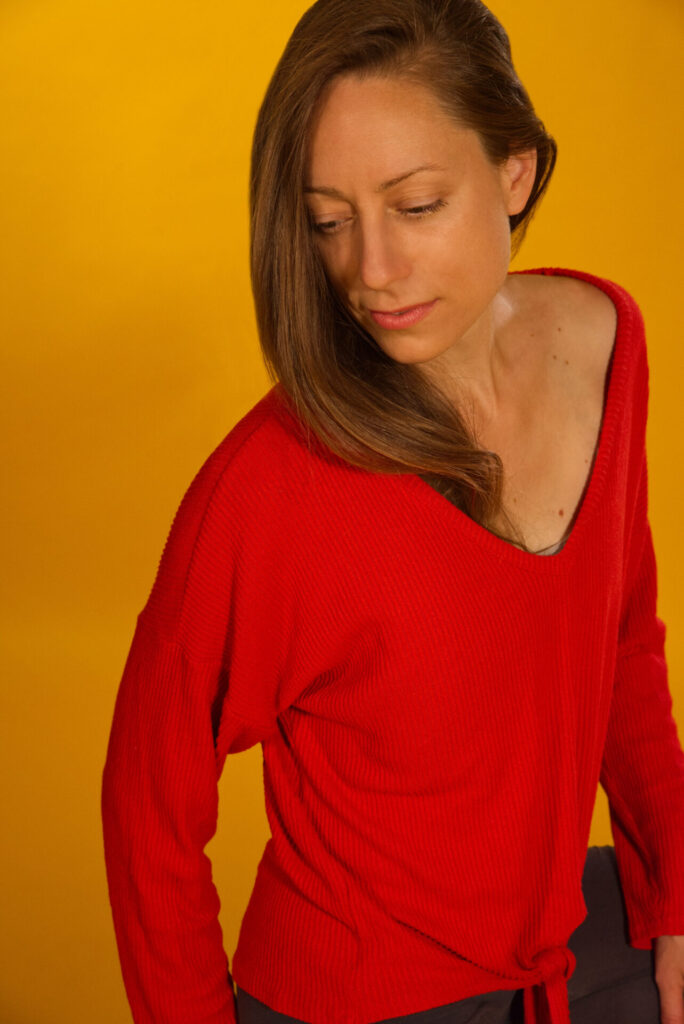
Photo: Carlo Kovačec
Q: What is therapeutic yoga?
A: The longer I practice yoga, the more I teach in the way that it has a therapeutic effect. This means that I prioritize methods that specifically help in solving a problem. In guided online classes (or as part of private lessons) I address a specific problem, question or part of the body. With movements, breath, paying attention to that part, stretching and a compassionate attitude, we can touch our body consciously and purposefully to work out the muscles and tissues that keep us trapped in pain.
The therapeutic approach respects the complexity of every health problem and approaches it holistically using yogic methods. Yoga therapy respects individual differences in age, lifestyle, philosophy, occupation, mental and physical health of each individual because each of us is a special combination of psycho-somatic characteristics.
I share an interest in the therapeutic approach to yoga with my colleague Katarina Luketina, with whom I started the online education program “Divya therapy” (now Zdrav’ko yoga). We invited respected Croatian yoga teachers who also recognized how yoga can be used for therapeutic purposes to work on one topic in a two-hour theoretical-practical workshop. The workshop series were very successful and educational, I learned a lot myself.
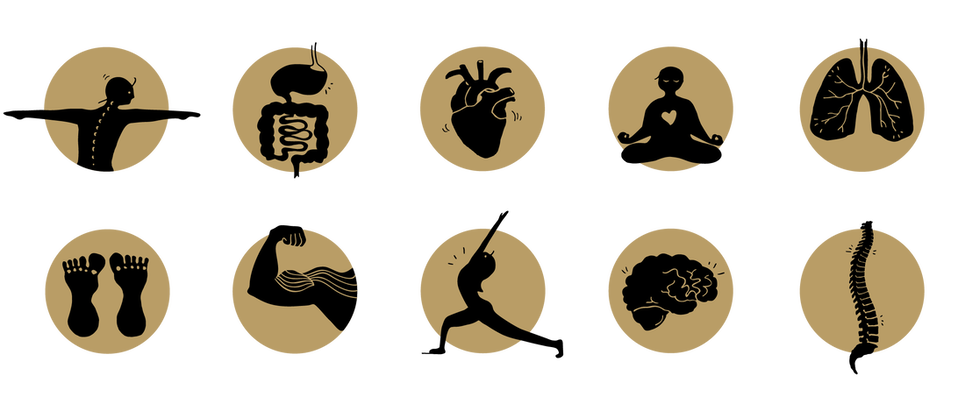
Q: What was your path to yoga?
A: At the age of 18, I came into contact with yoga for the first time through the book by B. K. S. Iyengar “Light on yoga” and started doing yoga positions according to the book in the company of friends. I continued to practice independently until the age of 23, when I started taking guided Ashtanga and Vinyasa yoga classes at the Zagreb yoga studios Nava and Sangha. Since 2009, Ashtanga Vinyasa yoga has become the basis for my personal practice and the yoga style I teach (read my attitude and approach to Ashtanga Vinyasa yoga at – Ashtanga yoga).
I had completed the yoga teacher training program (RYT 200) at the Gaia Yoga school under the guidance of Marco Bianco and Sandra Đidara Bianco. I am grateful to my teachers for supporting and teaching me.
Over the years, I have attended many workshops and courses of world-famous Ashtanga yogis: David Swenson, Richard Freeman, Kino MacGregor, Marc and Joanne Darby, Govinda Kai, Manju Jois, Harmony Litchi, Eddie Stern, Petri Raisanen, Jadranko Miklec… I continued my yoga teacher training with Petra Carmichael at Divya yoga centre where I completed my further education (RYT 500). This is where my practice gains stability and security, for which I can thank my teacher Petra.
I started teaching yoga motivated by the feeling that this discipline is a valuable tool for a better life and that I can pass on to others what is helping me.
In 2004, I went to Sri Lanka for three months to a Buddhist meditation center where I deepened my knowledge of Buddhism and Vipassana meditation. Since then, I have attended many 3, 10 or even 14 day meditation retreats under the guidance of wonderful teachers: Mislav Brečić, Bhante Sujiva, Ajahn Sundra, Martine Batchelor, Tina Rasmussen, S. N. Goenka centers (read my approach to meditation on the meditation page).
I do not separate the practices of meditation and yoga from everyday life, I tend to apply the riches of these teachings for the life we live here and now.
I have been teaching yoga since I graduated from yoga teacher training school in 2012, first in several small groups, but soon I started teaching regular groups in Om yoga and Šareni Studio in Zagreb. Since 2018, I have started running Divya yoga centre and school with my teacher Petra, our collaboration was very nice but short because Petra moved to America and left the Divya yoga centre to me. Until 2021, I run the centre, yoga programs and two generations of yoga teacher training (TT200) with my colleagues. The center had closed in the spring of 2021, and in the fall the same year I started this independent Tena yoga project.
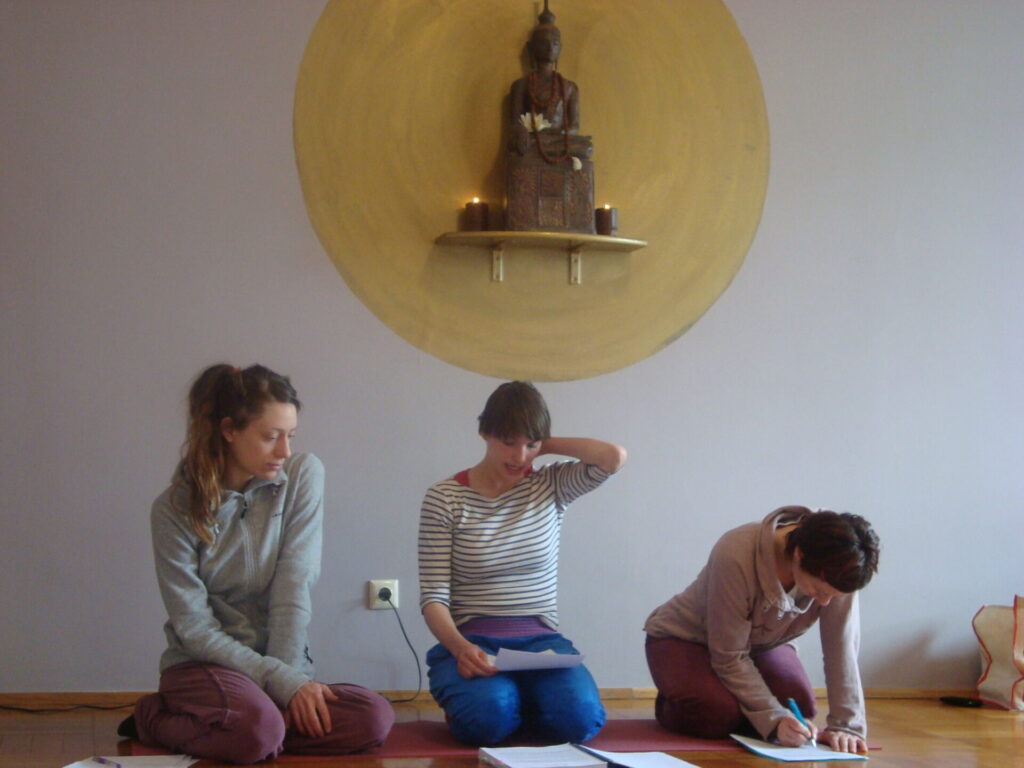

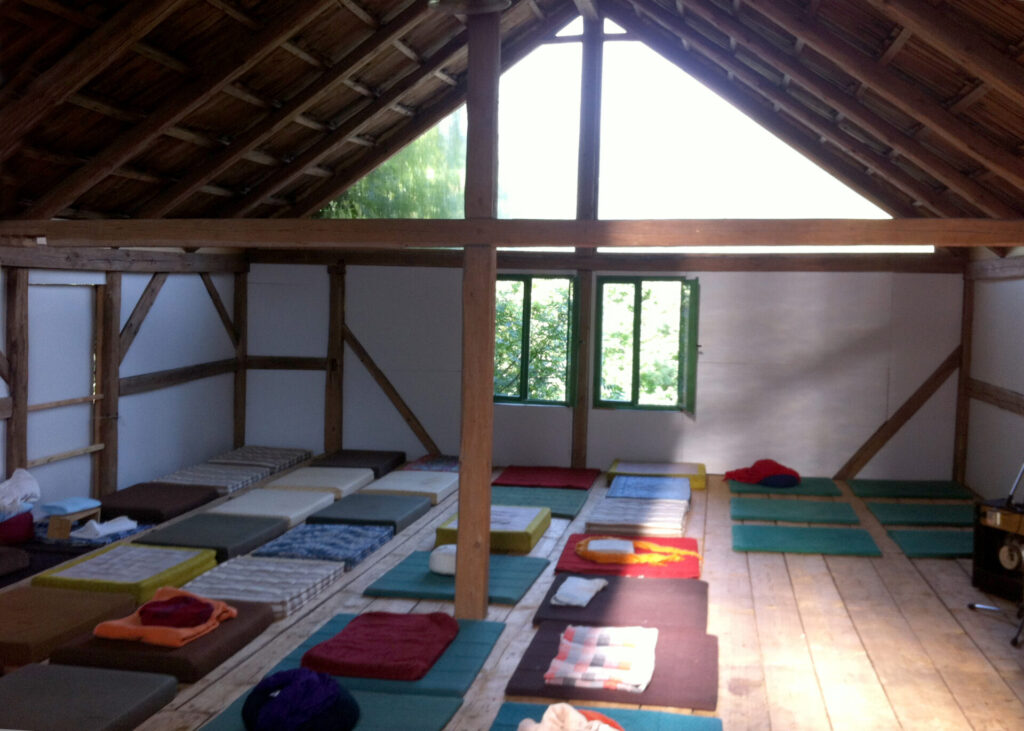
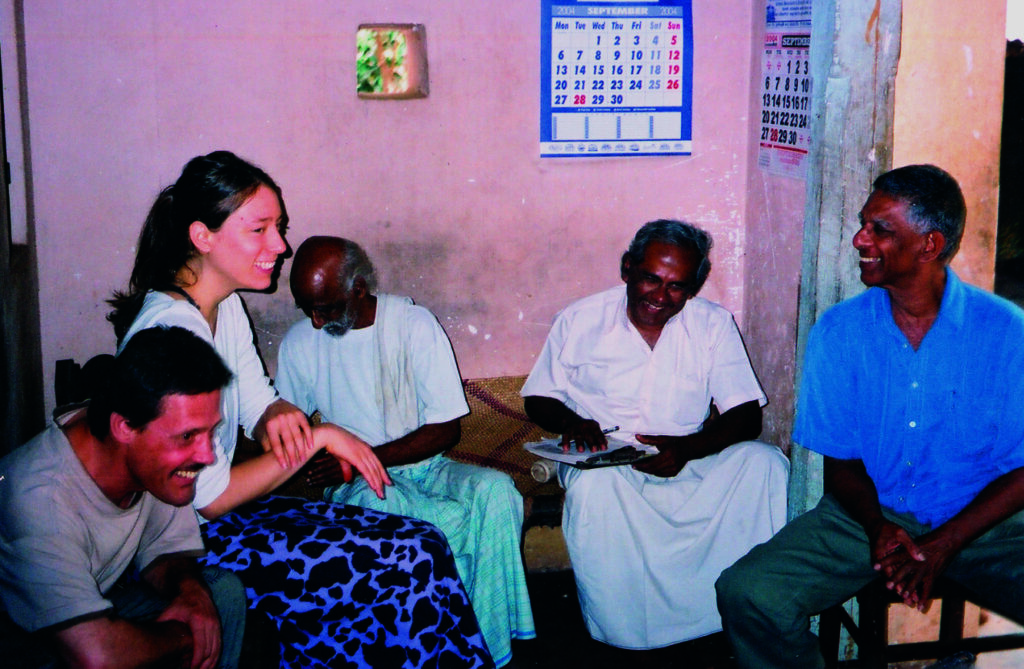
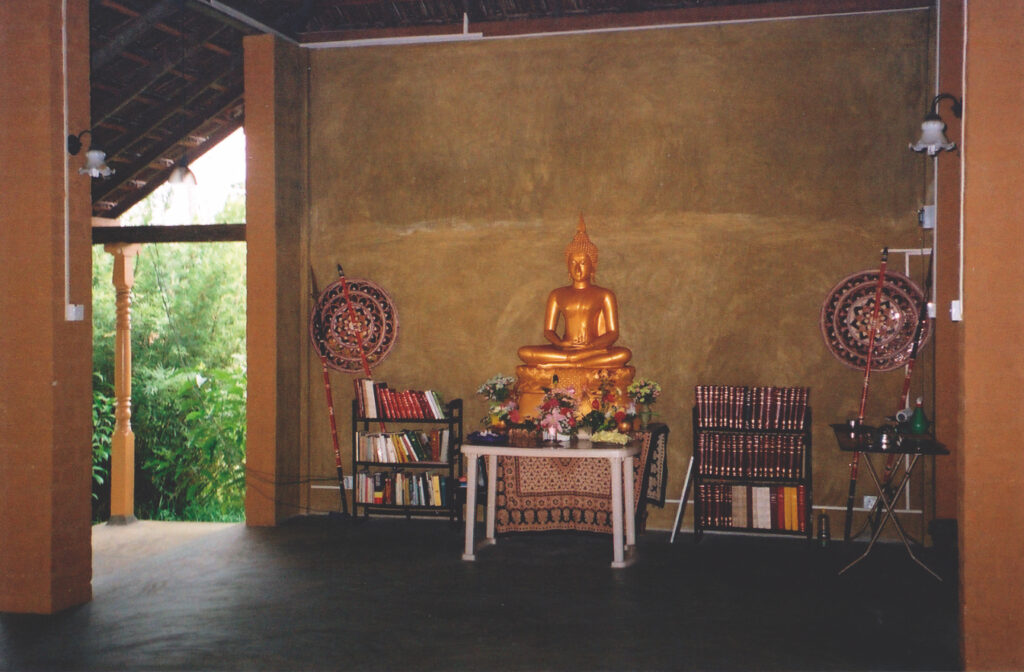


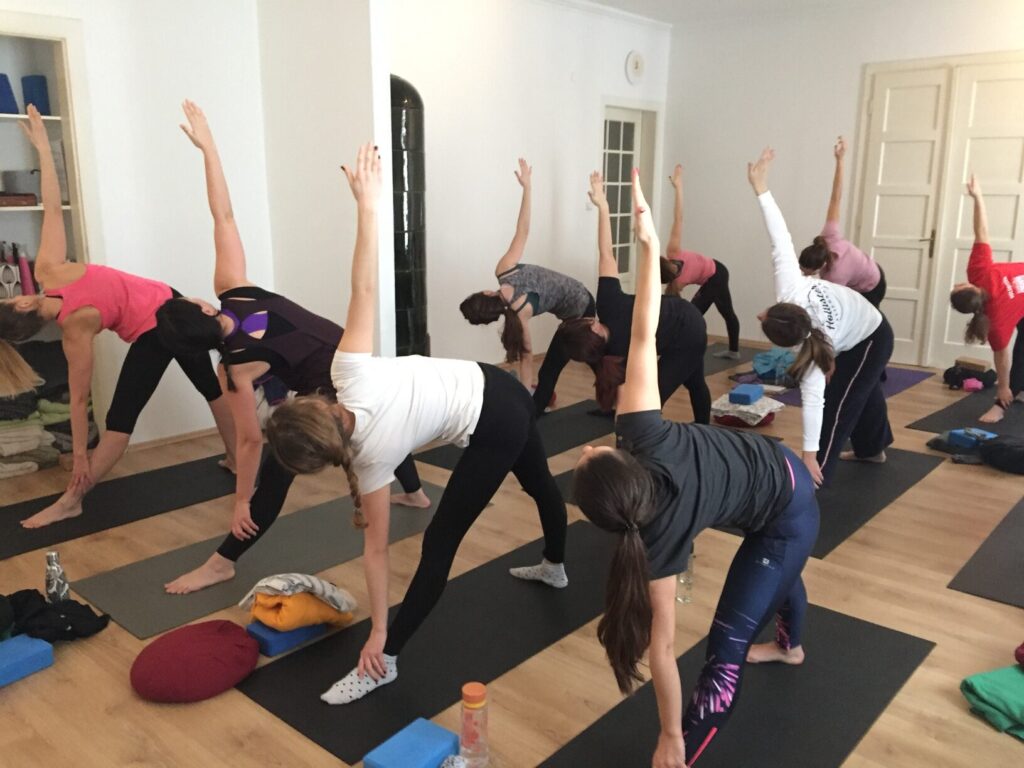
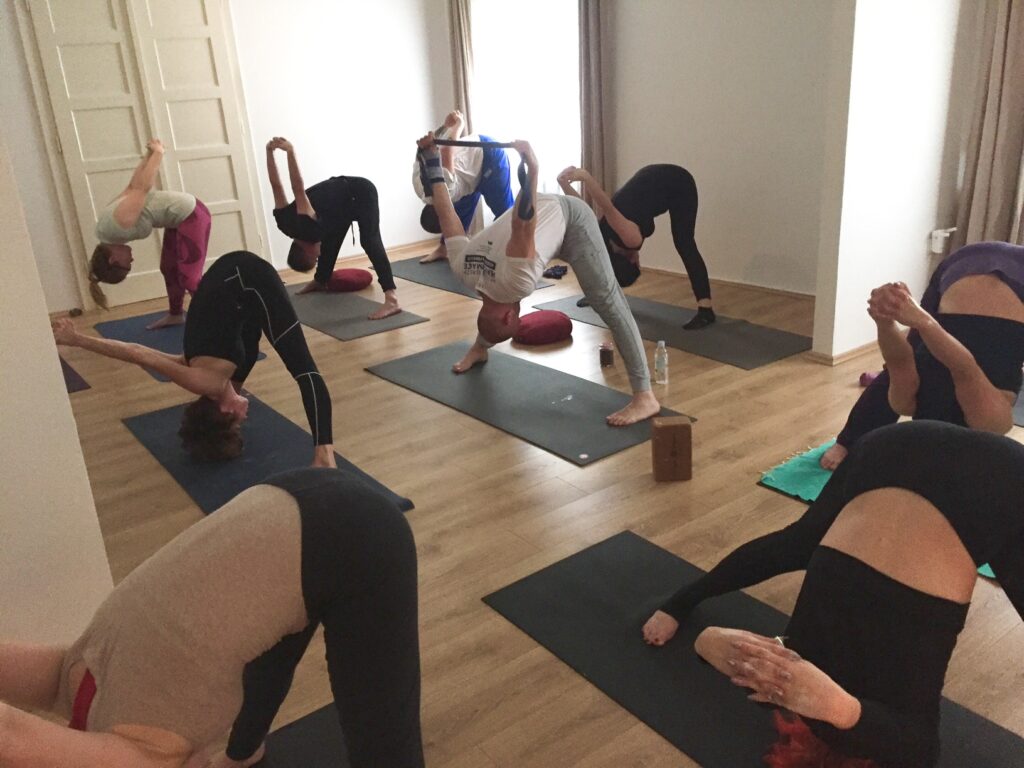
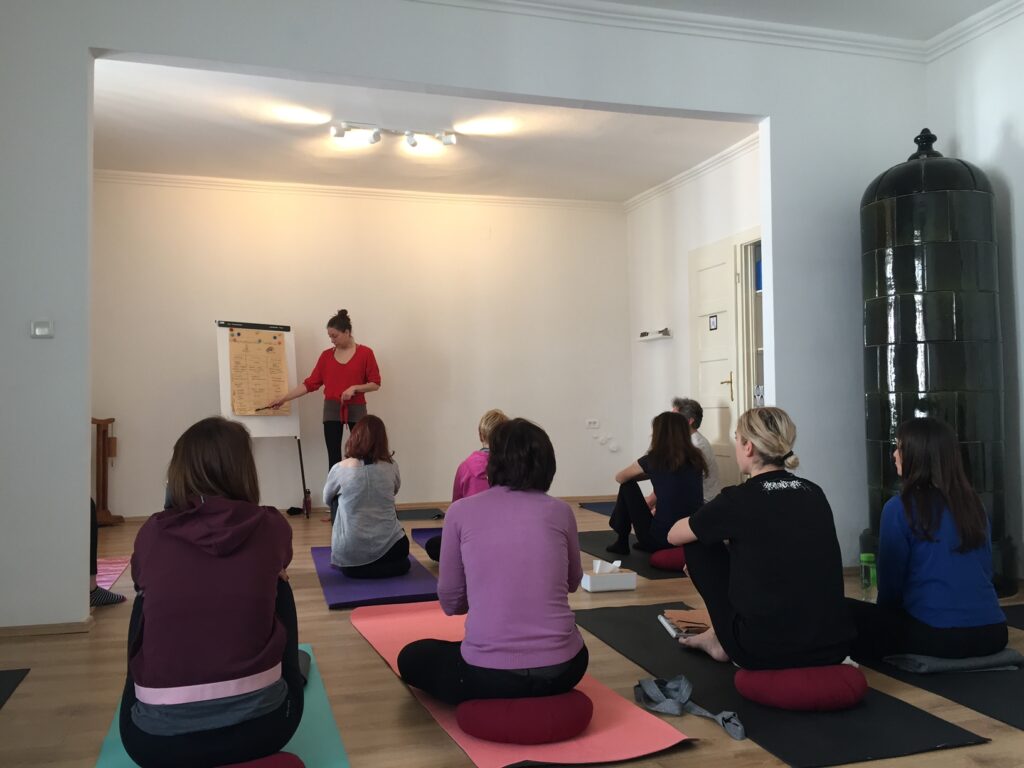
Photo: my archive
Knowledge and experience that I curiously collected for many years, had applied to myself and filtered so that it was as clear and as practical as possible for everyone is an open resource. Find my YouTube playlists of many yoga class recordings.
Join me, practice, learn and see what works for you. If you want to support my work, choose one of the offered options and feel free to donate. Notice whether you are happy when you donate and what value the teaching you receive has for you.
